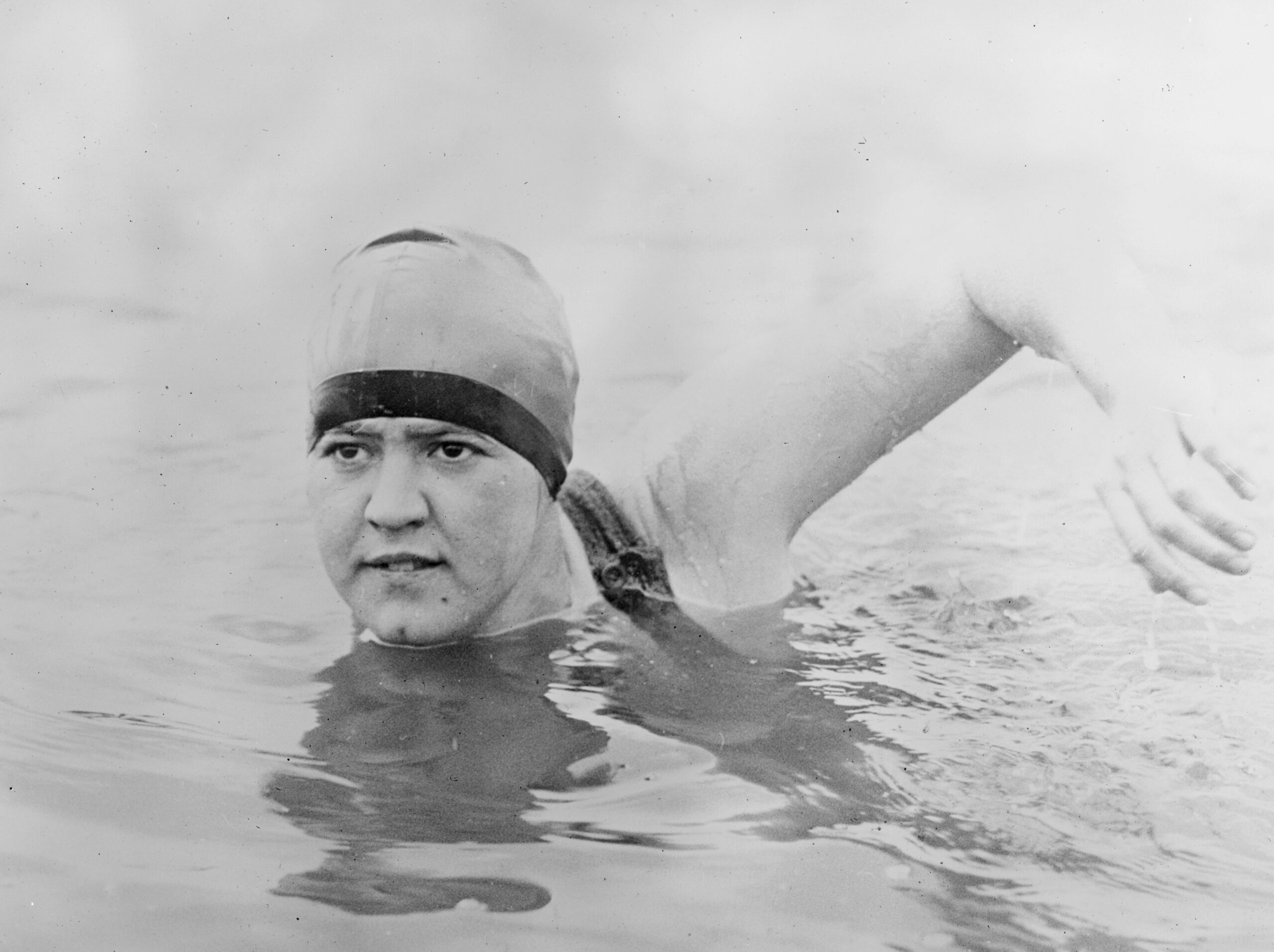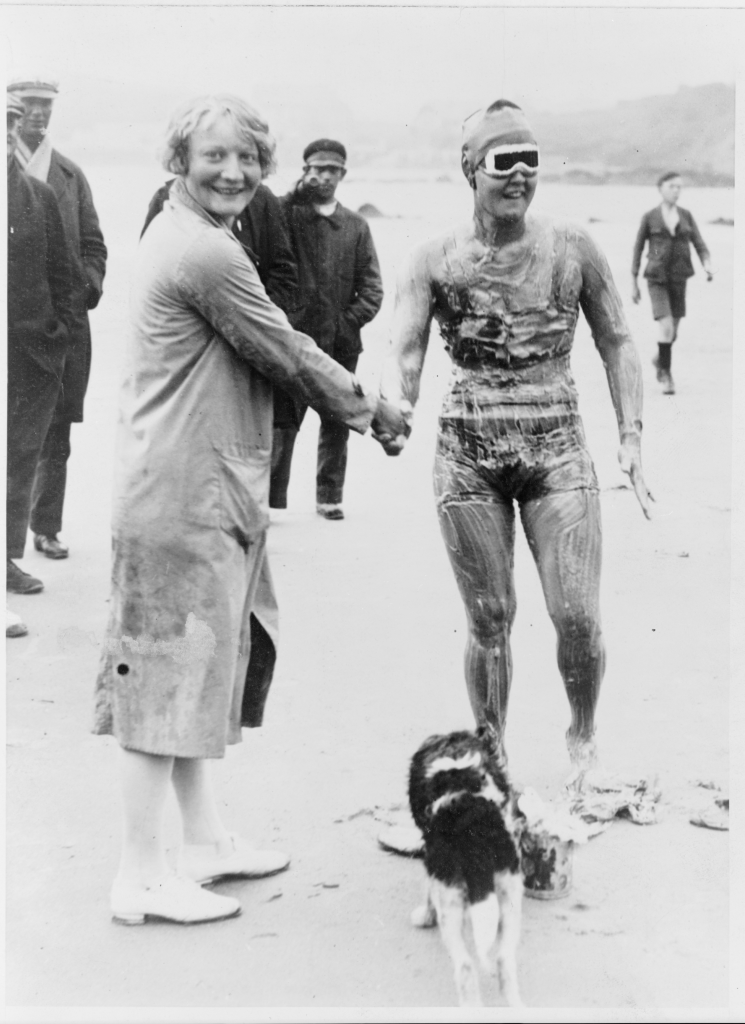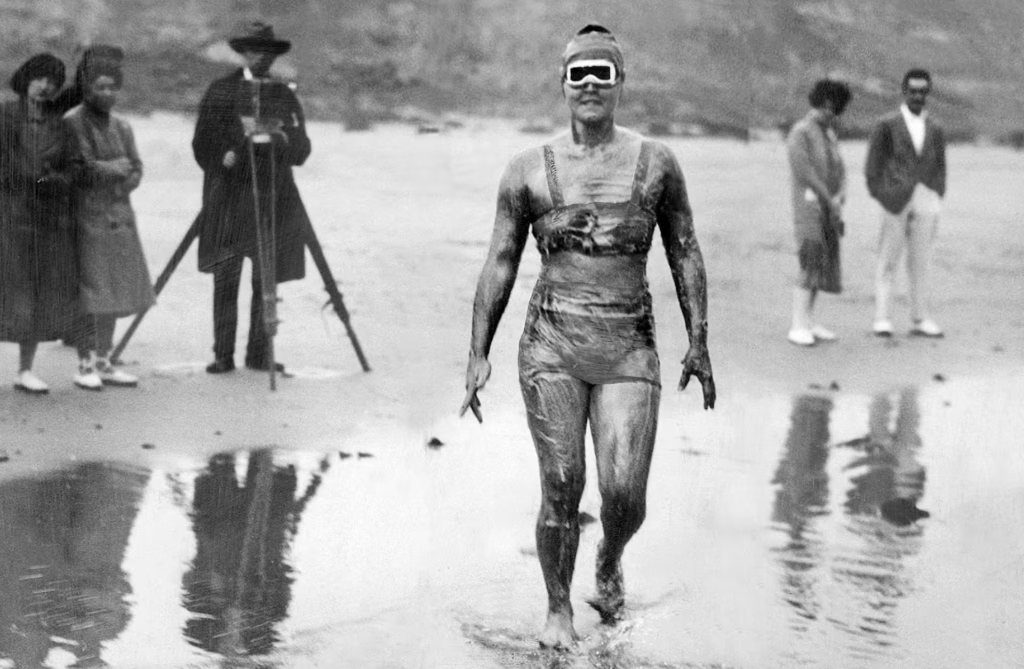Gertrude Ederle: the first woman to swim the English Channel

In 1926, a young American woman named Gertrude Ederle defied not only the cold, choppy waters of the English Channel but also the rigid gender expectations of her time. At just 20 years old, she became the first woman to swim across the English Channel, accomplishing what many male swimmers had failed to do before her. Ederle’s 14-hour and 34-minute swim was more than a feat of athletic endurance—it was a symbol of female empowerment, perseverance, and a changing world.
Early Life and Passion for Swimming
Gertrude Caroline Ederle was born on October 23, 1905, in New York City to German immigrant parents. From a young age, she was drawn to water. Her family spent summers in New Jersey, where she taught herself to swim by watching others and practicing in the ocean.
At age 9, she suffered from measles, which caused partial hearing loss—a condition that would eventually worsen. Yet, this did not deter her. She joined the Women’s Swimming Association (WSA), an organization that promoted competitive swimming for women, and quickly began setting national and world records.
Rise to Athletic Fame
By the early 1920s, Ederle had established herself as one of America’s top swimmers. At the 1924 Paris Olympics, she won three medals: a gold in the 4×100-meter freestyle relay and two bronzes in individual freestyle events.
But Ederle wasn’t satisfied with medals alone—she wanted to make history.
The English Channel: A Challenge for the Ages
The English Channel, a 21-mile stretch of frigid, unpredictable waters between England and France, was considered the Mount Everest of swimming. Only five men had successfully crossed it by 1926.
Women were widely believed to be physically and mentally unfit to handle such an ordeal. Ederle was determined to prove them wrong.
Her first attempt in 1925 was cut short due to her trainer pulling her from the water—against her protest—after swimming for nearly 9 hours. Undeterred, Ederle sought out a new coach, Bill Burgess, himself a successful Channel swimmer.

The Historic Swim: August 6, 1926
On August 6, 1926, Ederle entered the water at Cape Gris-Nez, France, covered in a layer of grease to insulate her from the cold. She wore a homemade two-piece bathing suit, considered daring for its time, and goggles sealed with paraffin wax.
Her swim lasted 14 hours and 34 minutes, battling:
- Strong currents and cold temperatures
- Waves over 6 feet high
- Salt water that burned her throat and eyes
Despite the harsh conditions, Ederle didn’t just complete the swim—she shattered the existing men’s record by nearly two hours.
Reaction and Legacy
When Ederle emerged from the water at Kingsdown, England, she was met with stunned admiration. Her achievement made headlines around the world. Upon returning to New York City, she received a ticker-tape parade attended by over 2 million people—a reception fit for royalty.
Ederle became:
- A symbol of female athleticism and determination
- A pioneer in women’s sports
- A national hero and an international inspiration
Nicknamed “Queen of the Waves”, she was invited to meet President Calvin Coolidge, starred in a short Hollywood film, and toured the country giving swimming exhibitions.
Later Years and Challenges
Despite her success, Ederle’s fame was short-lived by the standards of celebrity culture. She suffered a spinal injury in a fall during a swim tour, which affected her mobility. Her hearing loss also worsened, eventually leading to total deafness.
She spent her later years teaching deaf children to swim, using her platform to advocate for the disabled and show that physical limitations need not define one’s life.
Gertrude Ederle died in 2003 at the age of 98, a forgotten but fierce icon of women’s sports.
Impact and Historical Significance
Gertrude Ederle’s accomplishment wasn’t just about endurance—it was about breaking boundaries:
- She challenged outdated views of women’s fragility.
- She inspired future generations of female athletes.
- She redefined what was possible for women in sport—not just in swimming, but in every field dominated by men.
Her record held strong, and though many women have since swum the Channel, Ederle’s journey remains a watershed moment in both athletic and feminist history.
Conclusion
Gertrude Ederle swam more than 21 miles that day in 1926—she swam through waves of doubt, sexism, and physical hardship. Her crossing of the English Channel was a crossing into a new era for women, where the limits of the body were no longer dictated by gender. Her legacy endures as a testament to grit, grace, and a refusal to be told “no.”





